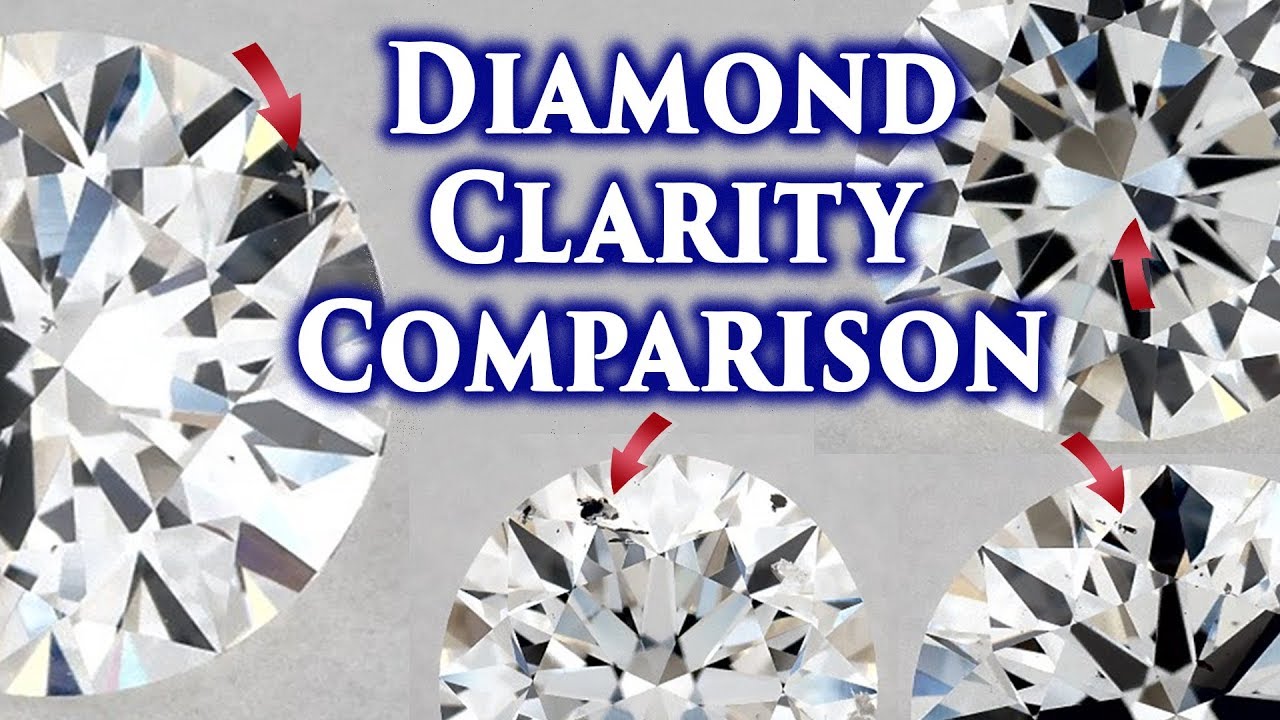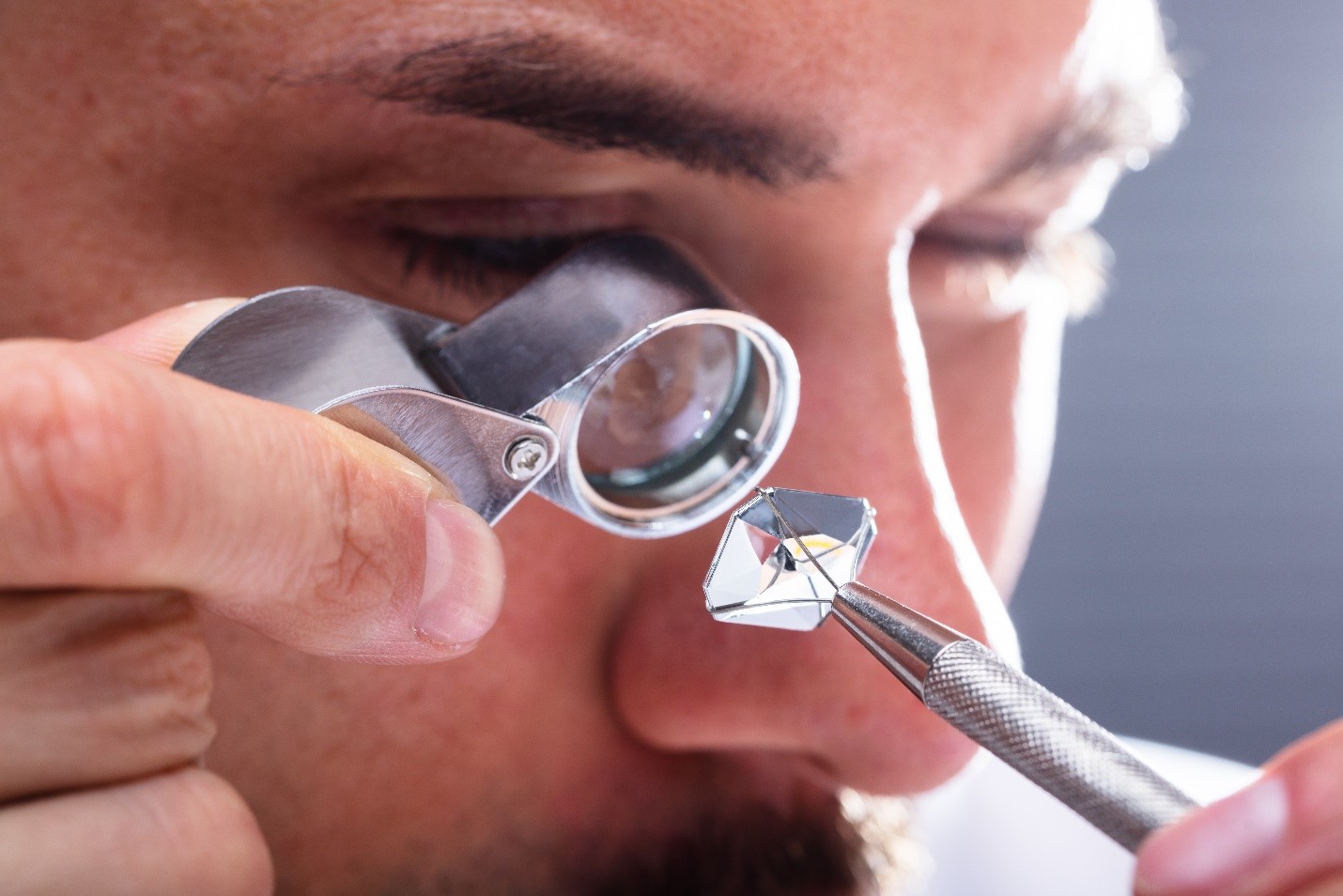In order to select the most suitable diamondfor your own jewelryor collection, it is important to examine the clarity of the diamond being considered. Clarity can be defined as the quality of being transparent or pure. In order to help you in this case, I will discuss with you what clarity you should look for in a diamond by keeping in mind the diamond clarity scale.
We'll also learn about the many levels of diamond clarity.
What Are Diamond Clarity Levels?
- AGS 0: Flawless or Internally Flawless
- AGS 1 or 2: VVS
- AGS 3 or 4: VS
- AGS 5, 6, or 7: SI
- AGS (7, 8, 9, or 10): I
What Is Included In The Diamond Clarity Scale?

Diamond Clarity Comparison VS1 vs VS2 SI1 SI2 VVS1 VVS2 I1 IF I2 I3 FL Ring Chart Explained Scale SI
Flawless(FL): Under 10x magnification, there are no inclusions or blemishes that can be seen. AGS 0
Diamondswith no imperfections or flaws on the surface are known as flawless diamonds. Internally Flawless diamonds are free of inclusions, but they may have minor flaws on the surface that can be cleaned off with a diamond soft cloth.
Internally Flawless(IF): No inclusions can be seen with 10x magnification. AGS 0
An Internally Flawless diamond is a diamond that has no apparent inclusions when viewed under a 10x magnification lens. This is important because inclusions have an impact on the look of a diamond. They can cause it to appear milky, scratched, blurry, cracked, or even totally colored as a result.
Very, very slightly included(VVS): Under 10x magnification, it's hard for a skilled grader to see very, very slight inclusions (VVS1 and VVS2) that are so small that even they can't see them. It is hard for a skilled grader to see even with 10x magnification. VVS1 is a better clarity grade than VVS2, which is a lower grade. Pinpoints and needles set the grade at VVS.
Very Slightly Included(VS1 and VS2): Inclusions can only be seen with a lot of effort under 10x magnification, but they are still small. VS clarity is a good choice for most people who want a diamond. These stones almost never have visible flaws. Their prices are also much lower than those of diamonds with better clarity.
Slightly Included(SI1 and SI2): Inclusions can be seen with a 10x magnification. There are diamonds in the SI category that have visible inclusions that are easy for a trained gemologist to see when they are viewed under 10x magnification. SI1 is a better clarity grade than SI2. SI2 is a lower clarity grade. These may or may not be visible to the naked eye.
Included(I1, I2, and I3): Inclusions can be seen under 10x magnification, which could make things less transparent and brighter. Included diamonds have inclusions that are usually visible without magnification, or they have inclusions that could weaken the stone's strength and make it less durable.
How Important Is Diamond Clarity?
The value of diamond clarity is determined by other diamond characteristics such as shape and size. The shallow pavilion and open table of step-cut diamonds, such as emerald cut and Asscher cut diamonds, enhance the clarity of the stone and can make characteristics more visible.
Likewise, larger carat sizes can make characteristics more visible due to larger facets. The optimal clarity grade, like the other 4Cs, is a matter of personal choice. Even diamonds of the same clarity grade are unique.
How To Examine Cut And Color Grades With A Loupe?
A loupe is a type of magnifying glass that can be worn on your eyes, similar to the typical glasses that jewelers and watchmakers use.
A 30x loupe and a 10x loupe may be used to look at diamonds or any other stone. They will only use the 10x loupe to judge the diamond. The 30x loupe will help them find the inclusions that need to be looked at. The 10x loupe is always used to look at jewelry, even if it's not a diamond.
What Is The Best Level Of Diamond Clarity For You?
When it comes to the best clarity of a diamond, the Flawless (FL) is without a doubt at the top. You've read above what are the characteristics of a Flawless diamond. You will not see any imperfection on it, and that makes it more amazing but pricey.
Although these diamonds meet the true definition of perfection, their high price makes them impractical for most people. To give you an idea about it, I will give you an example.
Rarity Of Flawless Diamond
For a flawless diamond, the price ranges from $6,100 to $9,000. A well-cut 1 carat round cut diamond with a G-H color is worth between$6,000and $10,000. People who buy large flawless diamonds pay a lot morefor them because they're so rare.
Diamond Grade Chart By GIA
Conclusion
When choosing a diamond, the purity of the stone is extremely important to consider. The greater the number of flaws, the greater the potential for damage. The diamond clarity scale, which we've discussed in this article, can guide you in determining the quality of a diamond before investing your moneyin this type of high-priced stone.
The Gemological Institute of America (GIA) is providing more understanding regarding the clarity of a diamond; you will find out a lot more from the expert.

